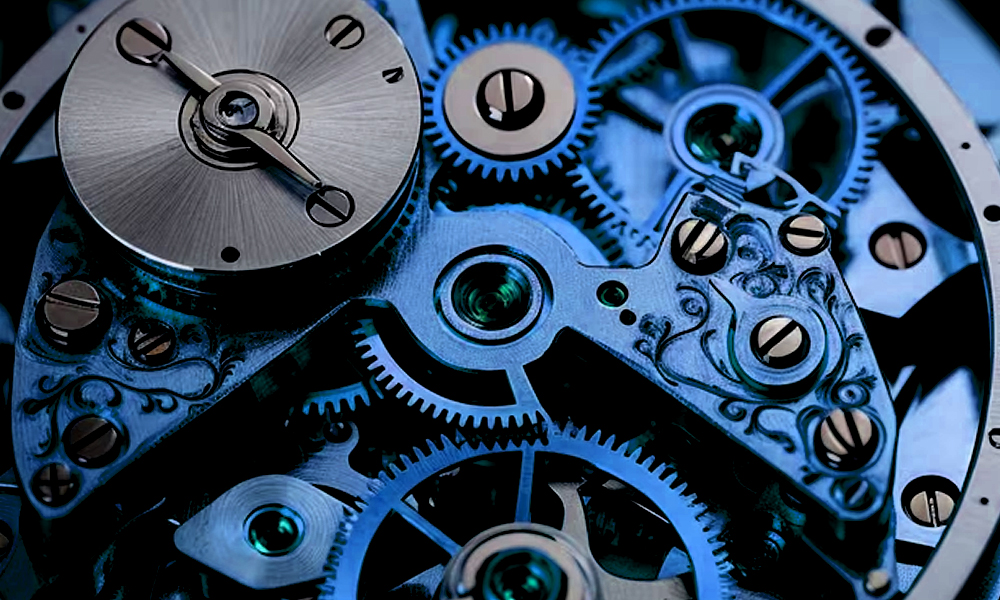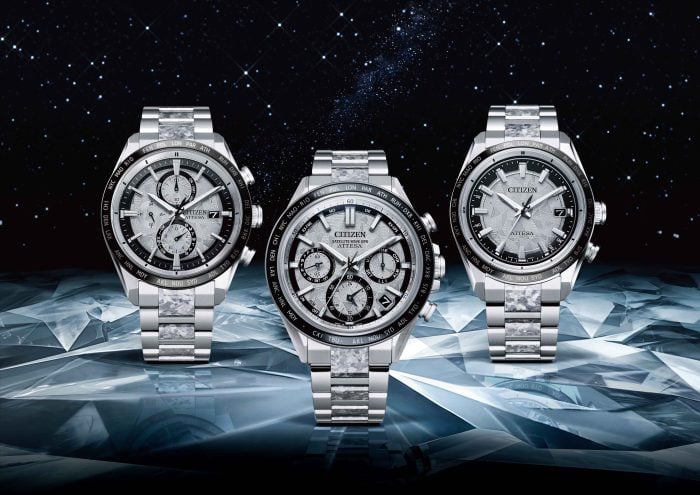Understanding watch-related terms is crucial for anyone who wants to fully appreciate and maximize the potential of their timepiece, be it a high-end brand like Rolex or a more budget-friendy option. A comprehensive grasp of these terms provides insight into the intricate world of horology, allowing enthusiasts to discern the technical nuances and craftsmanship behind their watches. Knowing the terminology also facilitates effective communication with watchmakers or when seeking assistance with maintenance and repairs. Ultimately, a solid understanding of watch-related terms not only enriches the personal enjoyment of wearing a watch but also empowers individuals to make educated decisions, fostering a lasting and meaningful connection with their timepieces. Let’s get into it.
Key Watch Terms to Know
Altimeter: A watch feature that measures altitude, typically used by adventurers and aviators.
Anadigi: A watch with a combination of analog and digital displays, blending traditional hands with digital elements.
Analogue: A type of watch display that uses traditional hour and minute hands on a dial.
Annual Calendar: A watch complication that automatically adjusts for months with varying days, requiring only one manual correction per year.
Aperture: An opening in the dial through which specific information, such as the date, is displayed.
Automatic, or self-winding: A watch movement that winds itself through the motion of the wearer’s arm, eliminating the need for manual winding.
Balance Spring: A crucial component in a watch’s escapement system, responsible for regulating the timekeeping accuracy.
Balance Wheel: A wheel in the watch movement connected to the hairspring, helping regulate the timekeeping.
Barrel: A part of the watch movement that houses the mainspring, storing energy to power the watch.
Bezel: The ring surrounding the watch dial, often used for decorative or functional purposes.
Bi-Directional Rotating Bezel: A bezel that can be turned in both directions and is commonly used for measuring elapsed time.
Bracelet: The metal or leather band that secures the watch to the wrist.
Bridge: A component in the movement that supports and aligns various parts.
Caliber: A term used to identify a specific model or type of watch movement.
Cambered: Refers to a curved or arched shape, often used in watch crystals.
Case Back: The rear cover of the watch case, which can be transparent, solid, or have engravings.
Chronograph: A watch with a built-in stopwatch function for measuring elapsed time.
Chronometer: A highly accurate and certified timepiece that meets strict precision standards.
Complication: Any additional feature on a watch beyond basic timekeeping, such as a date display or moon phase.
Crown: The knob on the side of the watch used for setting the time and winding.
Crystal: The transparent cover that protects the watch dial, often made of sapphire or mineral glass.
Deployant Clasp (or buckle): A type of watch buckle that unfolds to make it easier to put on and take off.
Dial: The face of the watch that displays the time and other relevant information.
Dive watch: A water-resistant watch designed for underwater use, often with a unidirectional rotating bezel.
Dual Time: A watch that displays the time in two different time zones.
Escapement: The mechanism in a watch that controls the release of energy from the mainspring to the balance wheel.
Exhibition Case Back: A transparent case back that allows a view of the movement.
Frequency: The number of vibrations or oscillations per second of a watch’s balance wheel.
Flyback Chronograph: A chronograph that can be reset and restarted without stopping.
Gasket: A rubber or synthetic seal used to make a watch water-resistant.
Gear train: The system of gears transmitting power from the mainspring to the hands.
GMT: Greenwich Mean Time, often used in watches to display a second time zone.
Guilloche: A decorative engraving technique often seen on watch dials.
Hacking Seconds: A feature that stops the second hand when the time is being set for precise time synchronization.
Haute Horlogerie: High watchmaking, denoting exceptional craftsmanship and precision.
Horology: The study and measurement of time and the art of making timepieces.
Hybrid Smartwatch: A watch that combines traditional mechanical elements with modern smartwatch features.
Indices: Hour markers on the watch dial.
Jewels: Synthetic or natural gemstones used as bearings to reduce friction in the movement.
Jump Hour/Minutes: A complication where the hour or minute hand jumps instantaneously to the next position.
Lugs: The protruding parts on either side of the watch case to which the bracelet or strap is attached.
Luminescence: The ability of a watch dial or hands to glow in the dark.
Mainplate: The primary base plate of the watch movement.
Mainspring: A coiled spring in the barrel that stores energy to power the watch.
Mechanical movement: A watch movement powered by a mainspring and regulated by
gears and an escapement.
Mono Pusher Chronograph: A chronograph with a single pusher to start, stop, and reset.
Moonphase: A complication indicating the current phase of the moon.
Movement: The internal mechanism of a watch that powers its timekeeping functions.
Perpetual Calendar: A complication that automatically adjusts for leap years, months, and days.
Power Reserve: The amount of time a watch can operate without being wound.
Pusher: A button on the case used to operate specific functions, such as starting or stopping a chronograph.
Quartz: A watch movement powered by a quartz crystal, known for its accuracy.
Rattrapante Chronograph: A chronograph with two seconds hands for measuring split times.
Rehaut: The area between the dial and the crystal, often used for additional markings.
Repeater: A watch that chimes the time on demand.
Retrograde: A complication where a hand jumps back to the starting position after reaching the end of a scale.
Sapphire Crystal: A transparent crystal made of synthetic sapphire, known for its scratch resistance.
Screw Down Crown: A crown that can be screwed tightly to enhance water resistance.
Skeleton: A watch with a transparent dial or case, revealing the movement.
Slide Rule: A rotating bezel or additional scale on the dial used for calculations.
Tachometer: A scale on the watch dial or bezel for measuring speed.
Tank Watch: A rectangular or square-shaped watch, characterized by its tank-like appearance.
Tang Buckle: A traditional pin-style buckle commonly used on watch straps.
Tourbillon: A rotating cage in the movement that aims to improve accuracy by compensating for the effects of gravity.
Winder: A device used to wind automatic watches.
World timer: A watch that displays the time in multiple time zones simultaneously.




